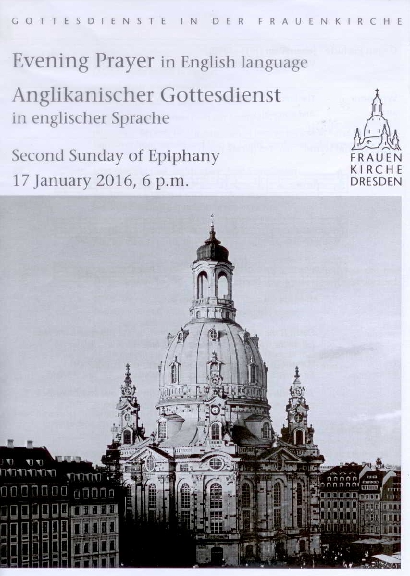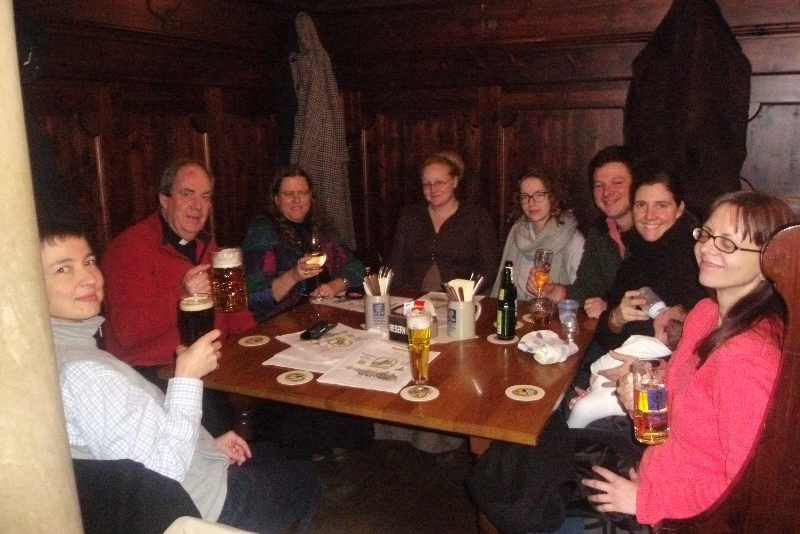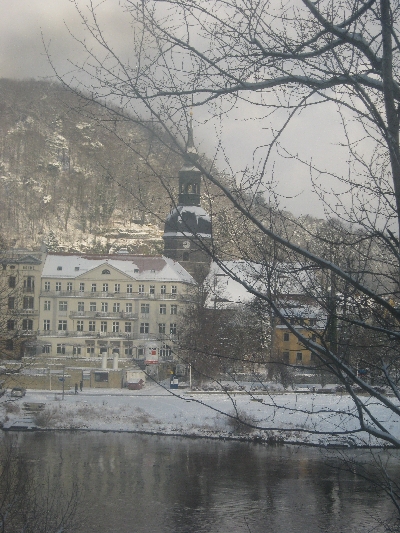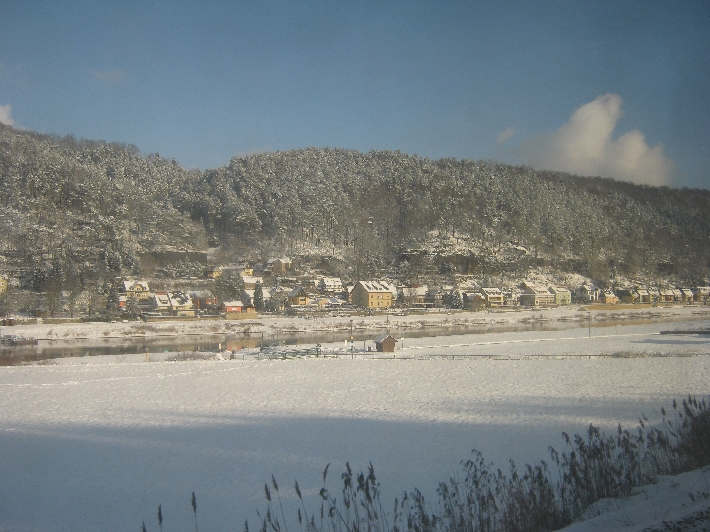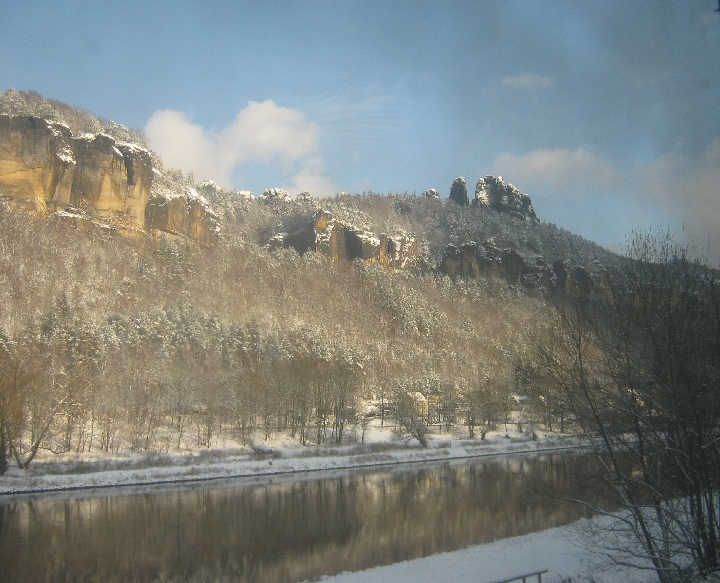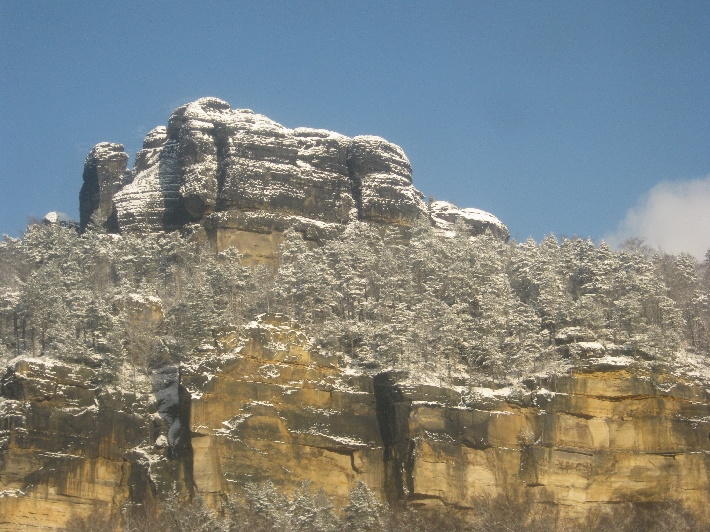
Back on the last Sunday of January 2016, we were joined at St. Clement’s for worship by Alex and Kathleen, a Czech-British couple, together with about fifteen of their family and friends. Alex and Kathleen live in the UK and are regular worshippers at their local parish church. But they also maintain a flat in Prague and, whenever they spend time here, they always join us for worship at St. Clements.
Alex was celebrating his ninetieth birthday, hence his family and friends had travelled from various parts of the world, to be in Prague to mark this special occasion. And attending our Church service that morning, was seen as an integral part of the weekend of celebrations.
A few months previously, Kathleen had asked me if they could invite a young Czech soloist called Jan, to sing during the service that morning. Jan is a personal friend of Alex’s and had studied music under our regular organist, Professor Michal Novenko. I assured her that this would be a wonderful addition to our worship and Michal was very pleased to cooperate and accompany Jan from the organ.
Therefore on that Sunday morning, Jan sang three different arias from Handel’s ‘Messiah’ – one after the sermon, before we said the Nicene Creed, and two during the administration of communion. He did so, standing on the balcony at the west end of the Church, where the organ is also located. From that vantage point, he watched and followed all of the service.
During the colder months of the year, following worship, we have Coffee Hour in the hall across the road from the Church in Klimentská 18. It is an opportunity both to share fellowship and to warm up after spending around eighty minutes in a Church with limited heating 😉 That morning, we also all got to share in a special birthday cake that Kathleen had provided.
At Coffee Hour, Jan sought me out in order to speak with me. He firstly thanked me for giving him the opportunity to sing during the service. But he then said to me, ‘ I want to bring a whole series of Roman Catholic priests to your services, to show them how to be warm and welcoming to everyone who comes to worship’. He then went on to say how he appreciated that everyone had a complete Order of Service containing all of our liturgy. How I explained when to stand, when to sit, when to join in, etc. For me, this is what I normally do. To him, it was a revelation!
As always, it is nice to be complimented and appreciated for what I do. But I was also deeply saddened to once more hear of the lack of warmth and welcome experienced by those who have attended Czech Churches, in Jan’s case, Czech Roman Catholic Churches.
Four and a half years ago, I wrote here on this blog, about the conversations I had with Czechs in their twenties, thirties and forties, at the reception following the wedding of Petr and Kristin. That they found the way I led that wedding service both warm and welcoming and in total contrast to their past experience of attending occasional Czech Church services. As I wrote then:
‘It is not the primary purpose of my being here in the Czech Republic, to minister to the spiritual needs of Czech people, but rather to the spiritual needs of native English-speakers. But I increasingly feel that the main reason that the Czech Republic is as atheistic or agnostic as it appears to be, is not because of a deliberate rejection of Christian faith by its population, but rather as a result of the failure of the Czech Christian Churches to be an attractive advert for the Christian faith.’
In recent months, I’ve tried to understand the reasons for this lack of welcome to newcomers or occasional worshippers in Czech Churches. So far, I’ve come up with two possibilities which I will now outline. I would welcome feedback, especially from native Czechs, as to whether I’m correct.
One reason is that it is a hangover from Communism. During the nearly forty-two years of communist rule in Czechoslovakia, those who attended Church worship; those who were Church members, all suffered. They were restricted in the area of employment, often being forced to only do menial tasks. Their children were limited regarding educational opportunities. Therefore Church congregations turned inward, seeking to mutually support each other. They didn’t welcome any outsider who wanted to join them, suspecting such individuals to be informers.
The second reason is not unique to the Czech Republic – I’ve come across it many times in England. It is the attitude that those who decide to come to Church, should already ‘know what to do’. They shouldn’t need any explanation – they should know!
Both of these attitudes have got to change! It is nearly twenty-seven years since the fall of Communism. The outsider is to be welcomed and not feared. And there is now an almost completely un-churched generation who cannot be expected to know what ‘we do in Church’.
Sadly, the answer to my question in the title of this post is that many Czech Churches are not welcoming. If they do want to grow and not die, habits need to change – rapidly!














